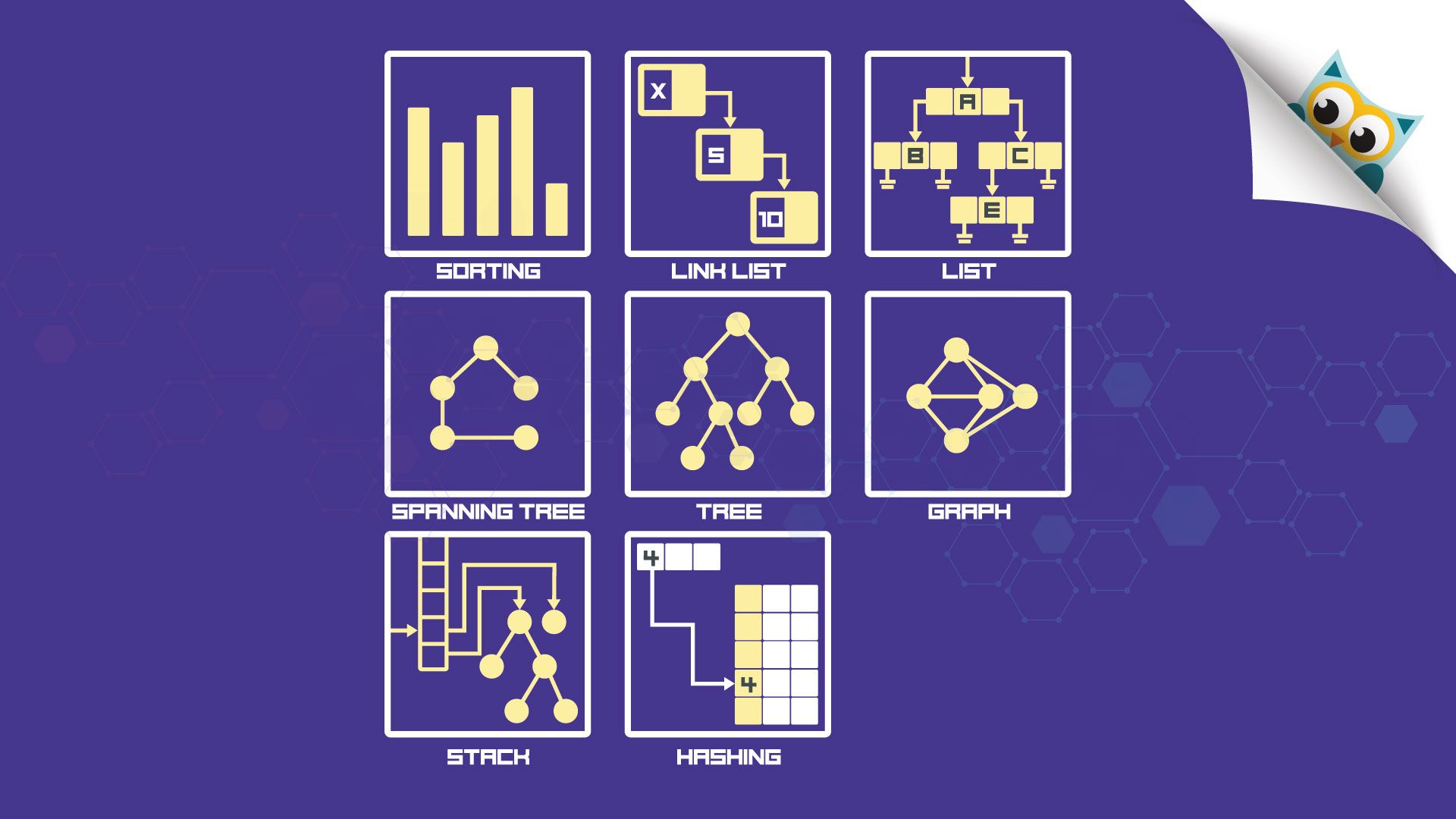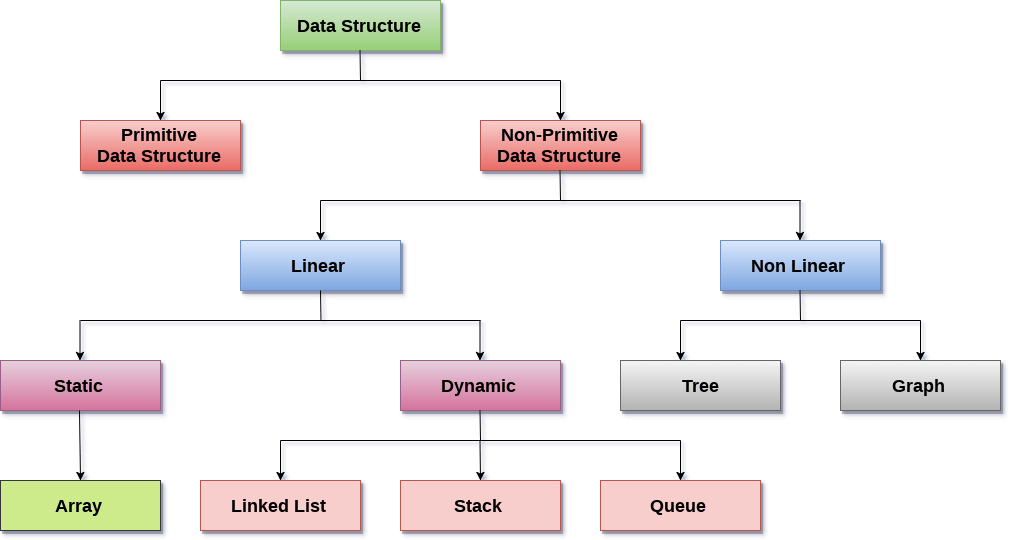Data Structure

Data Structure can be defined as the group of data elements which provides an efficient way of storing and organising data in the computer so that it can be used efficiently. Some examples of Data Structures are arrays, Linked List, Stack, Queue, etc. Data Structures are widely used in almost every aspect of Computer Science i.e. Operating System, Compiler Design, Artifical intelligence, Graphics and many more.
Data Structures are the main part of many computer science algorithms as they enable the programmers to handle the data in an efficient way. It plays a vital role in enhancing the performance of a software or a program as the main function of the software is to store and retrieve the user's data as fast as possible.
Types of Data Structures
There are two types of data structures:
- Primitive data structure
- Non-primitive data structure
Primitive Data structure
The primitive data structures are primitive data types. The int, char, float, double, and pointer are the primitive data structures that can hold a single value.
Non-Primitive Data structure
The non-primitive data structure is divided into two types:
- Linear data structure
- Non-linear data structure

Linear Data Structure: A data structure is called linear if all of its elements are arranged in the linear order. In linear data structures, the elements are stored in non-hierarchical way where each element has the successors and predecessors except the first and last element.
Non Linear Data Structures: This data structure does not form a sequence i.e. each item or element is connected with two or more other items in a non-linear arrangement. The data elements are not arranged in sequential structure.
Major opeartions performed on Data Structure
- Traversing: Traversing a Data Structure means to visit the element stored in it. This can be done with any type of DS.
- Searching: Searching means to find a particular element in the given data-structure. It is considered as successful when the required element is found. Searching is the operation which we can performed on data-structures like array, linked-list, tree, graph, etc.
- Insertion: It is the operation which we apply on all the data-structures. Insertion means to add an element in the given data structure. The operation of insertion is successful when the required element is added to the required data-structure. It is unsuccessful in some cases when the size of the data structure is full and when there is no space in the data-structure to add any additional element. The insertion has the same name as an insertion in the data-structure as an array, linked-list, graph, tree. In stack, this operation is called Push. In the queue, this operation is called Enqueue.
- Deletion:It is the operation which we apply on all the data-structures. Deletion means to delete an element in the given data structure. The operation of deletion is successful when the required element is deleted from the data structure. The deletion has the same name as a deletion in the data-structure as an array, linked-list, graph, tree, etc. In stack, this operation is called Pop. In Queue this operation is called Dequeue.
- Sorting: The process of arranging the data structure in a specific order is known as Sorting. There are many algorithms that can be used to perform sorting, for example, insertion sort, selection sort, bubble sort, etc.
